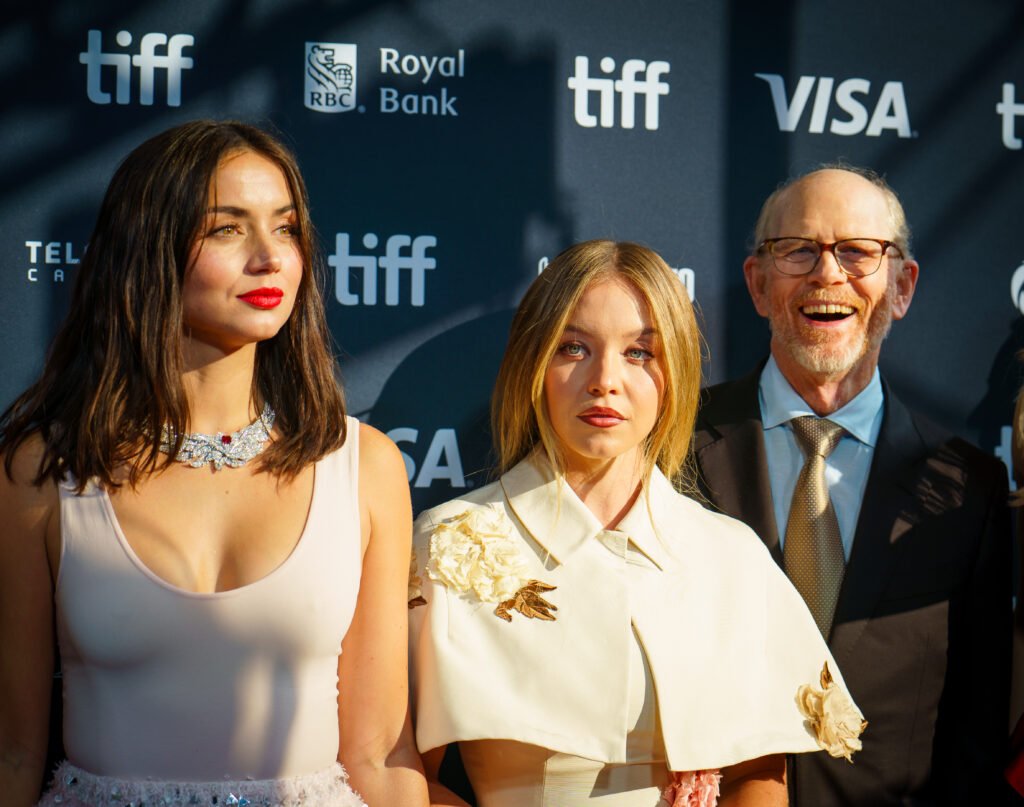Sydney Sweeney’s latest campaign with American Eagle is trending, and not just for the denim. The tagline, “Sydney Sweeney has great jeans,” is a pun but also a problem, depending on who you ask. With its cheeky wordplay, viral potential, and baked-in backlash, the campaign is either a brilliant example of disruptive advertising or a tone-deaf misstep in a post-woke marketing world. Possibly both.

From Clever Wordplay to Public Backlash
It starts off playful and then spirals.
In the ad, Sweeney, 27, flashes her famous smile and says, “My genes are blue,” riffing on both her eye color and her pants. The line is meant to be tongue-in-cheek. But for some viewers, the subtext isn’t just about color or style it’s about coded messaging.
Critics online were quick to call out what they saw as echoes of eugenics, a discredited and dangerous ideology that’s been associated with racial purity and white supremacy. The juxtaposition of Sweeney’s genetic reference with her blonde hair and blue eyes struck a nerve, and American Eagle hasn’t offered a comment yet.
The controversy seems to have amplified the campaign’s reach just not in the way most brands would hope. Still, there’s a case to be made that this was all intentional.
Advertising in an Attention Economy
Allen Adamson, co-founder of brand firm Metaforce, wasn’t surprised by the blowback.
Speaking to NPR, Adamson argued that today’s marketing world is fueled by noise, not nuance. In an era where jeans are cheap and available everywhere, standing out matters more than playing it safe. “People remember disruption. People remember the edge,” he said.
He compared Sweeney’s campaign to Brooke Shields’ now-infamous 1980 Calvin Klein ad, where she declared that nothing came between her and her jeans. That ad was slammed as sexualizing a 15-year-old. And yet, it made headlines and sales.
The goal, Adamson explained, is no longer about just selling pants. It’s about breaking through a wall of content, memes, and scrolling thumbs.
The “Inclusive Wave” Might Be Ebbing
For years, fashion advertising bent over backward to look like the United Nations.
From casting racially ambiguous models to brands like Fenty centering on inclusivity, diversity in campaigns was both moral and profitable. Consumers wanted to see themselves on screen and brands made sure they did.
That momentum, however, may be fading. Adamson points to a shift where, instead of casting people who check multiple demographic boxes, brands are betting on standout personalities even if they don’t represent everyone.
-
Brands once favored multiracial, ambiguous faces to appeal broadly
-
Inclusive ads became common, almost expected and less noticeable
-
Now, the edge comes from bold individualism, not safe diversity
-
Sweeney’s casting reflects a pivot back to old-school, central-casting appeal
-
The goal? Go viral, even if it means stirring debate
That shift, critics argue, runs the risk of undoing progress and alienating audiences who don’t see themselves in campaigns anymore.
Is Shock the Only Way to Sell a Commodity?
Here’s the thing about jeans they’re everywhere.
You can pick up a pair at Costco or the Gap for under $30. So how does a brand like American Eagle, which sells jeans at a higher price point, make its product feel special? The answer isn’t in the stitching it’s in the story.
Advertising expert Adamson made the point bluntly: “Jeans are commodities.” What sets one pair apart isn’t quality, but perception. A bit of sass, controversy, and virality might just be the difference between a shopping cart and a scroll-by.
So Sweeney’s smirking blue-eyed pun might’ve been crafted precisely to stir things up because a boring ad doesn’t move inventory.
Culture Wars, Celebrity, and the Algorithm
It’s impossible to ignore the timing and the medium.
This isn’t a glossy print ad in Vogue; it’s made for TikTok, Instagram, and Twitter. A campaign like this is born to trend, not to sit quietly in a window display. And in today’s algorithm-fueled media cycle, outrage can sometimes be more valuable than approval.
Sydney Sweeney is everywhere right now, from steamy rom-coms to HBO hits. Casting her wasn’t just about star power; it was about tapping into a specific cultural aesthetic. She’s blonde, All-American, with a touch of old-Hollywood glam and she’s controversial enough to keep people talking.
The campaign might’ve gone too far. Or maybe, it went just far enough.
